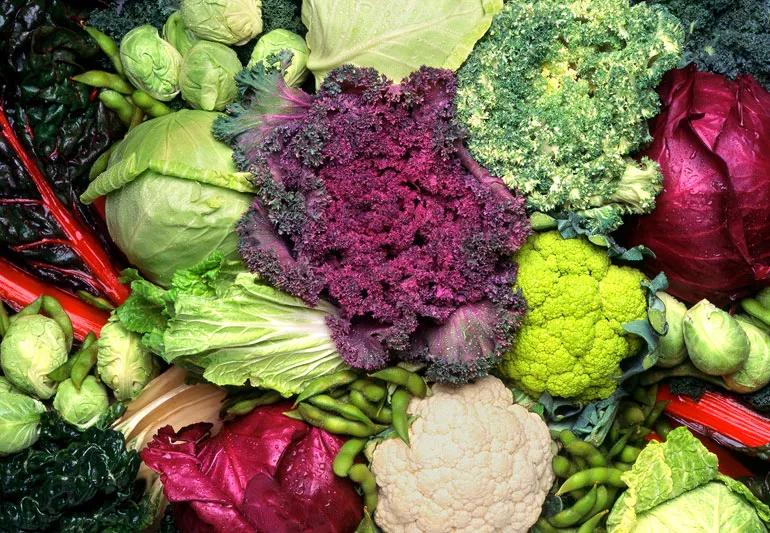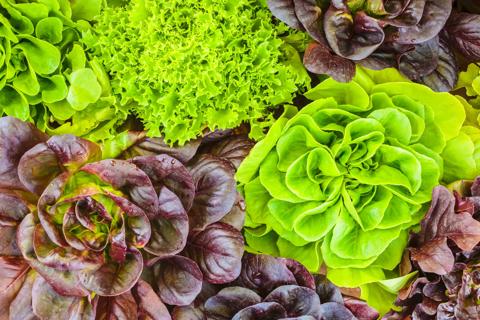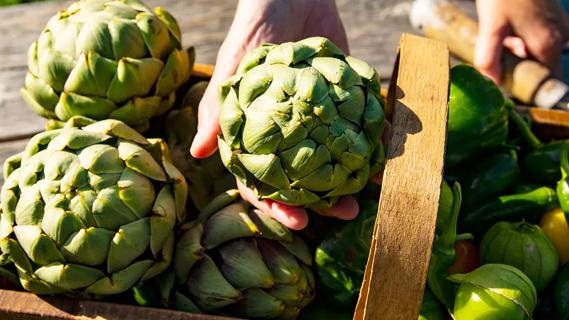Broccoli, leafy greens and other crucifs are full of nutrients and even cancer-fighting properties

If you’re looking for vegetables that are rich in vitamins, minerals and even have anti-cancer properties, look no further than the group known as cruciferous vegetables.
Advertisement
Cleveland Clinic is a non-profit academic medical center. Advertising on our site helps support our mission. We do not endorse non-Cleveland Clinic products or services. Policy
This group of leafy greens, cabbages and mustard-like veggies pack a nutritional punch and some seriously versatile flavors.
“Cruciferous vegetables are easy to find in most places and are some of the most nutrient-rich veggies around,” says registered dietitian Amber Sommer, RD, LD.
What makes crucifers so healthy? And how can you make sure you’re getting enough of them to reap their benefits? Sommer walks us through it.
Cruciferous vegetables belong to the genus Brassica. They’re called cruciferous because their four-petaled flowers look like a crucifix, or a cross. And their rich colors are an indication of just how nutrient-packed they are.
“A good rule of thumb for greens or any fruits or vegetables is that the deeper the color, the more nutrient-dense it is. For example, spinach contains more vitamins and minerals than iceberg lettuce,” Sommer explains.
Cruciferous vegetables include some of your favorite go-to dark, leafy greens and other colorful, nutrient-rich veggies. Among the members of the cruciferous family are:
Advertisement
Being in the same genus means cruciferous veggies have a lot of similar characteristics.
For example, dogs belong to the same genus as wolves. Closely related, but with some important differences. More like first cousins than siblings.
“As a group, cruciferous vegetables all offer similar health benefits. I wouldn’t say any one is ‘better’ than the others. They each have a unique composition, so the key is to include a variety in your diet.” Sommer says.
She helps explain the benefits:
Cruciferous vegetables are a rich source of compounds known as glucosinolates, which may help fight cancer.
A number of research studies suggest that a diet rich in cruciferous vegetables may lower rates of a variety of cancers, including breast, pancreatic, bladder, lung, prostate and colon cancer.
Sommer says crucifers may also help to counteract cancer-causing nitrosamines and polycyclic aromatic hydrocarbons that are found in charred, cured or barbecued fish or meats.
Fiber is famous for keeping you, er … regular. It also stabilizes blood sugar, lowers cholesterol and keeps you fuller for longer. And cruciferous vegetables have high levels of both soluble and insoluble fiber. Insoluble fiber supports healthy gut bacteria. Insoluble fiber helps soften and bulk up your stool.
Broccoli in particular is a good source of fiber. One cup of broccoli gets you 5 of the recommended 25 to 35 grams of fiber you should have per day.
Vitamin C is well-known for its immune-boosting and wound-healing properties. It also helps protect your eyes, improves iron absorption and promotes healthy skin.
And while oranges tend to get all the glory when it comes to vitamin C, leafy greens are a solid source, too.
It’s recommended that you get between 75 and 90 milligrams (mg) of vitamin C per day. These foods can help get you there:
Vitamin K is a powerhouse that promotes bone growth and proper blood clotting. And cruciferous vegetables are some of the best sources of vitamin K.
For example, half a cup of collard greens, frozen or boiled, contains 530 micrograms (mcg) of vitamin K. That’s more than four times the recommended vitamin K intake for a day.
Vitamin B9 (folate) is important for forming red blood cells and DNA. It’s particularly important for people who are pregnant because it can help reduce the chance of birth defects. That’s why it’s a main ingredient in prenatal vitamins.
Advertisement
Vitamin B9 moves through your system quickly, so it’s an important vitamin to consume regularly. The U.S. Food and Drug Administration (FDA) recommends adults and children over the age of 4 get 400 mcg of folate per day.
These cruciferous veggies can help you get your fill:
Most people can enjoy cruciferous veggies without any negative consequences. But others may be advised to watch their intake.
In large amounts, cruciferous vegetables can cause gas or bloating for some people.
And people who take blood-thinning medication like warfarin (Coumadin®), may need to limit their intake. That’s because some cruciferous vegetables — particularly collard greens, kale and broccoli — are high in vitamin K, which can have a blood-clotting effect.
Additionally, some people will say that if you’ve been diagnosed with hypothyroidism (underactive thyroid), you should limit or avoid cruciferous vegetables. But Sommer says there’s little evidence that normal consumption of cruciferous vegetables affects thyroid function.
If you think you have reason to limit your intake, talk with a healthcare provider, like a primary care doctor or dietitian, about your concerns.
Advertisement
Unless you have a health condition that says otherwise, most people are well-advised to get about 2.5 cups of veggies each day. That includes cruciferous vegetables and others.
“One cup of cooked or raw broccoli is one serving,” Sommer explains. “But for the leafy greens, you want to go higher. About 2 cups of those make one serving.”
On top of their many health benefits, another reason to love cruciferous veggies is how easy they are to incorporate as a snack or meal. Try these ideas:
The U.S. Department of Agriculture (USDA) also shares a selection of recipes and suggestions for preparing cruciferous vegetables on its website.
Advertisement
Cruciferous veggies have an important part to play in a healthy diet. But Sommer is quick to remind us that they’re just one part of the equation.
“A healthy diet should include a wide range of produce,” she advises. “We encourage people to ‘eat the rainbow.’ That is, enjoy a variety of colors and flavors in your fruits and vegetables. That way, you can be certain you’re getting an array of the vitamins and minerals that keep your body healthy.”
Learn more about our editorial process.
Advertisement

As the stalky vegetable breaks down, it leaves behind sulfuric byproducts that can make your pee stink

Most of the time, beeturia is a curiosity, not a concern

This cruciferous veggie boosts your bone, eye and heart health and contributes to a lower risk of cancer

Some diets shun them, but research hasn’t concluded that they’re harmful

This versatile type of seaweed may help support weight loss, bone health and cancer prevention

Pickles are low in fat and calories and rich in some vitamins and minerals, but they’re usually high in sodium

Lettuce is a versatile vegetable loaded with antioxidants and good-for-you nutrients

This unique-looking veggie is fiber-dense and antioxidant-rich, and can improve the health of your gut, liver and heart

The ‘sunshine vitamin’ is found naturally in some fish and is added to other foods

Autism and ADHD often go hand in hand, giving rise to the term AuDHD

The Yuzpe regimen is less effective than other forms of emergency contraceptives, and it’s associated with more side effects